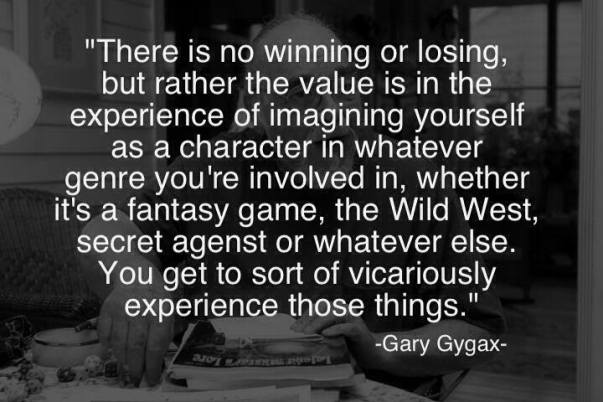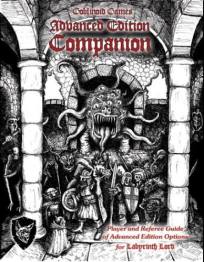How do you deal with it when your character is suddenly killed in a gaming session?
Well of course it depends on the session. Death in a one shot, especially a horror game is an expected inconvenience. Hopefully it happens towards the end of the session so you don’t feel your time was wasted. Maybe you will get to play the bad guys for the rest of the session or a transformed version of your lost character as a zombie, ghost, or werewolf.
Death in a long running campaign may be much more profound. It will certainly affect the other characters in the story, possibly even affecting the other players. There may be feelings of grief or guilt… Feelings that something could have been done to avoid the outcome. Certainly blame and finger pointing seems to be common, which can make people defensive and guarded. A discussion needs to take place addressing how to integrate a new character into the story. How are they introduced to the team? How much do they know about the goals and experiences of the group? Why are they accepted by the team? And keep in mind that the new character NEEDS to be accepted. Even if your character doesn’t trust the newcomer it should be represented with in game tension, not by rejecting the player’s new character from the group. We are after all, just people gathered around a table trying to have fun telling a story together.
Character death is much less common in modern game design. Many games have way to spend a Destiny point or toss a Fate chip and declare that a death blow wasn’t lethal. Modern games also may have mechanics that represent character growth from losing a team mate. Maybe you could change a Trait or Aspect to represent the sense of loss, which will have mechanical weight in the game. Talk about these options with the game master and the rest of the group after the session. The sudden loss of a character can be a great plot device for a story. Decisions have to be made on how this will affect the forward momentum of the plot. Maybe the remaining characters will be driven to complete their mission so the loss was not in vain. Maybe they will re-assess thier goals and decide to work towards a different end, possibly seeking revenge on the killer or even on their employer for “getting their friend killed”.
Of course in great hero stories death is often a temporary condition. Fantasy characters can sometimes be raised from the dead by magic (and a hefty donation to the local clergy). Science fiction characters can be healed by super science or rebuilt as cyborgs or clones. Superhero characters come back from the dead in all manner of mind baffling ways including all of the above, but often by the discovery that they didn’t actually die when it appeared they had! Always remember that when you are facing character death, the game master may have some ideas on getting the character back in the story. Don’t be afraid to talk about it. These games only work when we communicate, but don’t make the game slam to a halt to pontificate over the future of you dead hero… After all, everyone else is still trying to have fun too. The death of a character shouldn’t mean the session is over, unless the group seems to agree it’s a good time to start talking about how things are going to play out from here.
 Image by https://www.deviantart.com/katemaxpaint
Image by https://www.deviantart.com/katemaxpaint
When I started gaming in the 80’s character death happened a few times each session. No kidding. Characters often started adventuring with only enough hit points to survive one or two hits from the enemy. Healing was scarce or non-existent in most games. Danger was scaled by location, not scaled to your group’s capabilities. If you went too far in the wrong direction (especially down) you would often lose a character or two before you could run away fast enough to get back to a safer area. In games like Call of Cthulhu you could almost certainly expect to lose a character if you ended up face to face with the horrors of the mythos.
For example, in Dungeons & Dragons a typical character had an armor class that left goblins and orcs needing a 15 or better on 1d20 to score a hit. They started with about 6 hit points compared to the dozens of enemies they would face, dealing 1d6 damage per hit. If your character was lucky enough to come out of an encounter alive they needed to stay that way until they could find healing. Clerics wouldn’t get spells until 2nd level, then they could heal 1d6+1 hit points with cure light wounds ONCE per day. There was no way to rest and heal outside of town unless you could camp for a few days, but wandering monster tables usually prevented that. And even as you grew in power and hit points, there were always traps and special attacks that called for a saving throw. Typically this meant rolling a 12 or higher on 1d20, with failure resulting in death by poison, petrification, decapitation, falling into spikes hundreds of feet below, being submersed in acid or lava, squashed by a falling 10′ x 10′ x 10′ stone block, having a parasite of some kind burrow into your heart or brain, being dissolved into a hungry blob or jelly monster, going insane… I’m sure by now I’ve made my point.
So how did we deal with it?
Characters typically had hirelings and followers to take a few hits for them for staters. But players typically had multiple characters too. Sometimes you would even be running two or more characters at the same time, but most players had a second character back in town or up on the star ship. Everyone usually had a head full of ideas of what type of character they would like to play next. Sometimes losing a character was a welcome invitation to try out those ideas.
Before any game begins you should ask your game master if it is likely you will have to deal with character death, and if character death is permanent. In my own games it’s always on the table. If a situation ISN’T lethal I make sure my players know it. Typically their characters assess a threat as non-lethal but dangerous or time consuming. In combat an opponent might be obviously pulling punches or even come right out and say “I’m not going to kill you…”. But other than that my groups know, if they take risks then their character’s lives are on the line. I think knowing this helps avoid the real life bleed through of emotions when it’s time to “roll up a new character”. Again communication is key, and it’s worth repeating a third time… We are all just people gathered together to tell stories and have fun. So be good to each other, and keep gaming.










